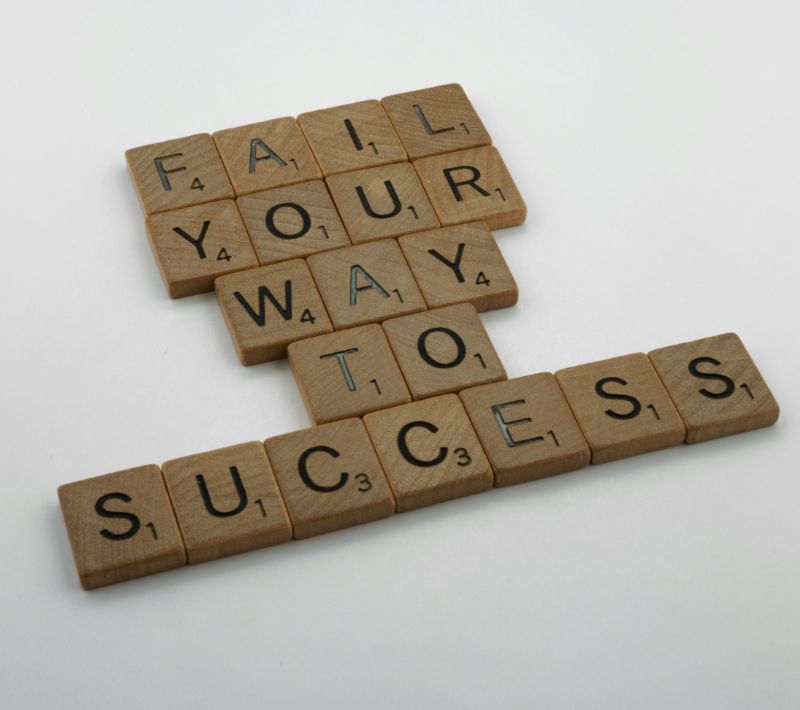What to Do When You Fail? 12 Smart Moves to Bounce Back

You’ve failed. It happens to the best of us. But moping around and feeling sorry for yourself won’t get you anywhere. It’d only make things worse for you in many aspects. That is why this year, I’m determined to see you resolve to handle failure differently by making some smart intentional moves that set you up for future success.
In this article, I shall be exploring some strategies on what to do when you fail. Let’s explore tips to help you bounce back after you’ve fallen flat on your face because as opposed to what we may think, failure is not the end. Oftentimes, it might just be redirection. Failure might make us feel lousy at the moment, but it often carries important lessons if you know how to listen.
From analyzing what went wrong to seeking support, to silencing your inner critic, these practical steps will help you learn from the experience, and teach you how to bounce back, regain your confidence, and keep chasing your dreams after you’ve failed. So come along, let’s get started.
15 Tips on How to Bounce Back from Failure
1. Accept That Failure Is Part of the Process
Failure is inevitable, and no matter how much you prepare or how hard you work, you will fail at some point. The key is to accept this and view failure as a learning opportunity rather than a defining moment. When you fail, don’t beat yourself up over it. The first best way to do this is to remember that failure is not a reflection of your self-worth or potential. Everyone experiences setbacks and mistakes on the road to success.
2. See Failure as a Chance to Grow Rather than a Permanent Condition
Failure often opens our eyes to new possibilities or a better path forward. When one door closes, another opens. But you have to be willing to look for the open door rather than banging on the closed one. Be flexible in your thinking. You can do this by asking yourself pivotal and self-reflective questions such as:
- What can I learn from this?
- How can this make me better/stronger/wiser?
- What is the hidden opportunity or lesson here?
Rather than dwelling on what went wrong, look for the silver lining. Extract the lessons, and choose to respond in a constructive way that fuels your growth and strength. Accept that failure will happen again in the future. With each failure, your ability to learn and adapt will grow, allowing you to fail better and succeed faster. Failure hurts, but pain often precedes progress. Accept failure graciously, learn the lessons it offers, and continue moving forward.
3. Analyze What Went Wrong and Learn From Your Mistakes
When you fail at something, it’s normal to feel frustrated or upset. But dwelling on negative emotions won’t help you improve and do better next time. Instead, analyze what went wrong objectively so you can learn from your mistakes. As the saying goes, failure is the best teacher.
Take time to reflect on what happened and understand the root causes. Were there any flaws in your planning or execution? Did you make inaccurate assumptions? Were there skills you lacked or should have developed more? Be honest with yourself about any shortcomings or oversights. Identifying your weaknesses is the first step to strengthening them.
4. Adjust Your Mindset
How you think about failure determines how you respond to it. Having a growth mindset – believing you can improve with effort – will help you get back on track. Instead of seeing yourself as a failure, view the failure as something that happened and that you have the power to overcome. Develop resilience and maintain an optimistic outlook.
5. Review the Sequence of Events; Look for Warning Signs You May Have Missed
Often we realize in hindsight there were signals that things were going off track. See if there are any patterns in your failures, stop and think about how you can spot them earlier in the future. Discuss with others involved to get their perspectives as well. Multiple viewpoints will give you a more complete picture of what went awry.
Once you have clarity on the failure points, determine what you can improve for next time. Come up with an action plan to build missing skills, get input from experts, adjust your methods, or revisit your assumptions. Practicing the improved techniques or approaches is key.
Failure is only permanent if you don’t learn and grow from it.
Conducting a thoughtful post-mortem and using it as an opportunity to better yourself will make you stronger and wiser.
6. Don’t Let Failure Define You – Focus on Growth by Seeing Failure as Temporary, not Permanent
Failure is often the result of circumstances outside your control and does not mean you are somehow fundamentally flawed or inadequate. Tell yourself “I failed at this one task”, not “I am a failure”. Your abilities and potential remain intact. Failure is temporary, so don’t make the mistake of equating your self-worth with a single setback.
7. Focus on Progress, not Perfection
No one is perfect, so don’t hold yourself to an impossible standard of excellence. As long as you are learning and improving over time, you are moving in the right direction. Compare yourself only to your past self, not to others. Celebrate small wins and instances of progress to stay motivated for continued growth.
8. Learn From Your Mistakes
The only way failure becomes permanent is if you fail to learn from it. Analyze what went wrong. Maybe you need more experience or preparation. Perhaps you misjudged or were overly optimistic. Determine what you can improve for next time. The most successful people view failure as feedback. Change the preposition, change your environment or approach.
If you continue to struggle or fail with the same goal, it may be time to shake things up. Try a new strategy or tactic. Surround yourself with people who support and motivate you. Look at the problem from new angles.
9. Dust Yourself Off and Try Again
I like to tell people that the only real failure is giving up. Success is often just around the corner, waiting for one more attempt. Have the courage and perseverance to pick yourself back up and try again. You should approach your next attempt with the lessons you’ve learned and renewed motivation.
The path to success is riddled with obstacles, but with determination, you will get there. Let failure motivate you, not discourage you. Failure only becomes permanent if you allow it to define you.
10. Re-Strategize and Pivot if Necessary
Sometimes when a plan fails, the best thing to do is re-strategize and make a pivot. Take a step back and look at the situation objectively. Ask yourself some hard questions:
- Did something change that made my original strategy obsolete?
- Were there flaws in your approach that need to be addressed?
- Do you need to make adjustments to account for new challenges or roadblocks?
Be flexible and willing to consider alternative paths forward.
11. Evaluate Your Options
Brainstorm new ideas and review your options. Get input from others if possible. Look for strategies that play to your strengths and the opportunities available. Consider a compromise that combines the best parts of multiple approaches. The solution may be simpler than you think.
12. Choose a New Direction
After evaluating your options, if you must, it is important to select a new strategy or pivot that you believe has the best chance of success based on what you’ve learned. It doesn’t have to be completely different from your initial plan. Even small changes can lead to very different outcomes as long as you’re willing to take up the work.
13. Take Action
Once you have a new strategy in place, take immediate action. Don’t delay, as that can create more doubt and lead to second-guessing your decision. Implement the new plan enthusiastically and make any necessary adjustments as you go. Let others who will be impacted know about the new direction as well. While failure is rarely fun, use it as an opportunity to grow.
By re-strategizing and being willing to pivot, you can turn a loss into a learning experience and a chance to try again smarter.
14. Your Support Network
Connect with people who encourage and support you. Call a friend or family member and talk about your feelings. Let others help lift you and provide perspective. Their positivity can help shift your mindset and motivation. Don’t isolate yourself – rely on your support network.
15. Be Kind to Yourself
Speak to yourself with compassion. No one is perfect, and everyone experiences failures and setbacks from time to time. Forgive yourself for your mistakes and avoid harsh self-criticism. Take a step back and be gentle with yourself as you work to rebound. You deserve to be happy. With time and effort, you can overcome your failure. Learn from it and use it as an opportunity to become better and stronger
Conclusion
When you fail again after trying your best, it can feel devastating. But don’t give up just yet! Failure is often part of the journey to success. The lessons you learn from failures today will help ensure your success tomorrow. So analyze what went wrong, learn from your mistakes, and get ready to bounce back. better than before.
By focusing your energy on growth and progress instead of regret or self-blame, you can be kind to yourself and overcome failure. You’ve got this! Now go out there and try again.
All images are sourced from unsplash.com
The one who spells Afrolady from the larynx of her pen. She’s a high spirited, cultured and ingenuous African child, whose writing drops an unimaginative creative splash on history and carves the indignation and memories of Black women.

